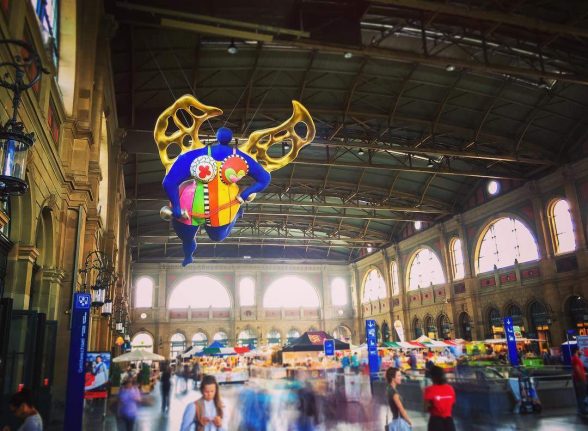News site 20 Minutes compiled Google reviews of some train stations in the Swiss-German part of the country, rating the best and worst among them.
As practically all the stations received both positive and negative comments, it is difficult to designate a clear winner or loser.
But this ranking gives an idea of what commuters like or dislike about particular stations.
Based on these reviews, the winners are….
Lucerne station, which is visited daily by 167,000 passengers and passersby, is number 1 in Switzerland.
“A nice train station in a convenient location and close to many local attractions”, one user wrote.
Zurich Hauptbahnhof , the largest in Switzerland with over 460,000 daily visitors, is ranked in the second place.
One reviewer rated it as “a very good and clearly arranged main train station. Has lots of interesting stores for shopping. And I also like the architecture very much.”
Aarau (76,000 passersby) and Zug (68,000) tied for the third place.
Aarau has a “great modern station. The new design as the lively centre of the city looks extremely successful”, one reviewer said.
As for Zug, “thanks to its light installation by [American artist] James Turrell, it is probably one of the most beautiful train station in Switzerland”.
…and now the ‘losers’:
Biel / Bienne (69,000 visitors) is at the bottom of the chart. One of the reasons cited by a reviewer: “There are always extremely long waiting times at the ticket counter”.
Bern. Some 330,000 passengers travel through the station in the nation’s capital, but some of them were underwhelmed.
“Whoever came up with the idea of building tracks so far away from the regular station area and then allowing highly frequented trains to run there should be dismissed”, one user commented.
Olten, with its 77,000 daily visitors is also at the bottom of the list.
“The trains are almost always late. Over time, this gets extremely annoying and is just tedious”, one passenger noted.
You can see how other Swiss train stations rated here.



 Please whitelist us to continue reading.
Please whitelist us to continue reading.
Member comments